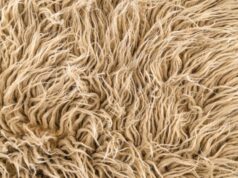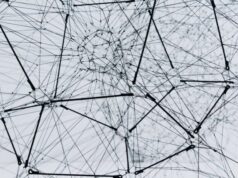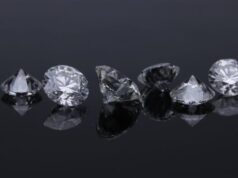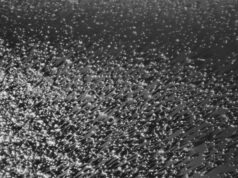Scientists have developed a method to use lasers to control the movement of nanodiamonds with fluorescent centers.
Scientists have long been working on improving their ability to use lasers to move small objects without actually touching them. This method of ‘optical trapping and manipulation’ is already utilized in optics, biological sciences and chemistry. But objects become much more difficult to control once they grow to nanoscale size.
Now, a team of scientists including Hokkaido University’s Keiji Sasaki and Osaka Prefecture University and Osaka University’s Hajime Ishihara have found a way to move diamond nanoparticles of about 50 nanometres in diameter, using opposing lasers. Their experiments, published in the journal Science Advances, aim to further research into the development of applications in fields like biological imaging and quantum computing.
“We believe our approach can enable a new class of optical force methodologies to investigate the characteristics of advanced nanomaterials and quantum materials and to develop state-of-the-art nanodevices,” says Sasaki.
Nanodiamonds have carbon atom lattices that sometimes contain an imperfection in which two neighbouring carbon atoms are replaced with a nitrogen atom and a vacancy (fluorescent center), which affect their quantum mechanical properties; nanoparticles react to light differently depending on their quantum mechanical property. Nanodiamonds with this fluorescent center (resonant nanodiamonds) absorb green light and emit red fluorescence and are being investigated for applications in biological imaging, sensing and single-photon sources. Nanodiamonds without fluorescent centers are non-resonant.
Find your dream job in the space industry. Check our Space Job Board »
Sasaki and his colleagues soaked an optical nanofiber in solutions of nanodiamonds with and without fluorescent centers. Shining a green laser through one end of the nanofiber trapped a single nanodiamond with fluorescent centres and transported it away from the laser.
The scientists demonstrated that, when a green and a red laser were shone on the nanodiamonds from opposite sides of the optical nanofiber, the movement of resonant and non-resonant nanodiamonds could be independently controlled: For the non-resonant nanodiamonds, the red laser pushes them more strongly than the green laser; however, the resonant ones absorb the red laser light and are hence pushed more strongly by the green laser. Thus, they could be sorted based on their optical properties. Furthermore, the number of fluorescent centers in the resonant nanodiamonds could be quantified by observing their movements under these conditions.
By using this technique to trap and manipulate nanodiamonds, the scientists have demonstrated a proof of concept. Their next step would be to apply it to organic dye-doped nanoparticles, which can be used as nanoprobes in biodetection systems.
Provided by: Hokkaido University
More information: Hideki Fujiwara et al. Optical selection and sorting of nanoparticles according to quantum mechanical properties. Science Advances (2021). DOI: 10.1126/sciadv.abd9551
Image: The optical forces acting on the nanodiamond. The nanodiamond absorbs a part of the laser light that shines on it (Fabs); some of the light is also scattered (Fsca). The interactions between these forces causes the movement of the nanodiamond (Hideki Fujiwara et al. Science Advances. 13 January 2021).
Credit: Hideki Fujiwara et al. Science Advances. 13 January 2021











